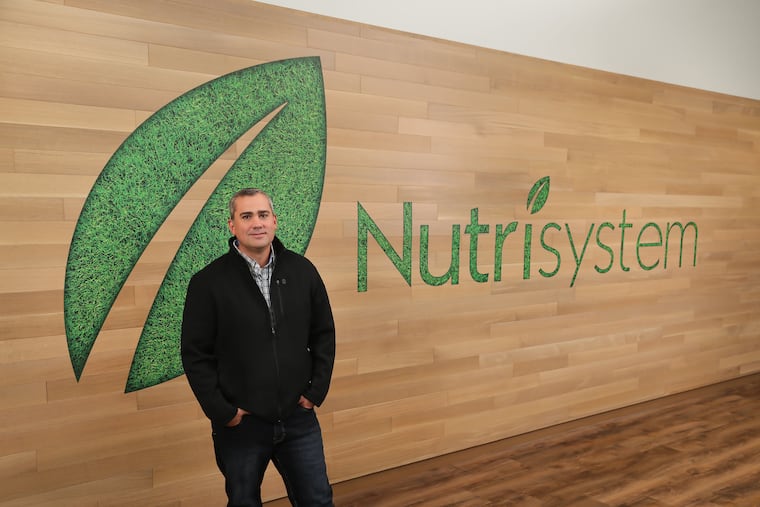How COVID accelerated growth for Nutrisystem, the Philly-area diet meal delivery company
President Stephen Mikulak talks to The Inquirer about how the pandemic and inflation have impacted the company.

New Year’s health resolutions may not be as lucrative for some businesses as they once were. But Nutrisystem president Stephen Mikulak said the Fort Washington-based weight loss and management company is not among them.
Founded in 1972, Nutrisystem has a variety of weight-loss programs — which include four weeks of meals and snacks, and sometimes protein shakes, delivered to doorsteps across the U.S. — that have become slightly more popular over the course of the pandemic. January remains its biggest month for new subscriptions, said Mikulak, who is in charge of 379 employees.
The president, who took over in 2021, declined to share specific figures for the company, which is part of Dallas private equity firm Kainos Capital.
“COVID brought health and wellness to the forefront more than before,” he said. “People realized some of the factors that determined how sick you got or how you were impacted by COVID really tied to your health.”
The pandemic made people across the country and the world more focused on health and wellness, data have shown. About half of U.S. consumers reported wellness — which includes fitness and nutrition, as well as mindfulness, sleep, appearance, and overall health — being a top priority for them in 2022, according to a McKinsey & Co. survey of more than 2,000 people. That’s up from 42% in 2020.
People in the United States are estimated to spend about $450 billion on wellness each year, according to McKinsey, with the industry growing annually by more than 5%.
As the industry has boomed in recent years, Nutrisystem’s marketing and programming has become more focused on living a healthy lifestyle, Mikulak said, as opposed to losing weight for aesthetic reasons. The strategy had already become more attractive to consumers in the years before COVID, he said, and the pandemic accelerated the trend.
In an interview last week, The Inquirer asked Mikulak about other ways the pandemic, inflation, and social media have affected the company.
The interview has been condensed for brevity and clarity.
As we come off a year of record inflation that saw rising prices and people cutting back on discretionary spending, how would you asses how Nutrisystem is doing overall?
The pandemic made people a lot more aware of their health and how important it was to be healthy. We obviously help people do that. As people lose weight, they can live a healthier life. And we deliver food to the door. E-commerce, home delivery, has continued to grow. It was growing before COVID, but COVID has accelerated that growth. Dropping [meals] right to their door has really allowed us to be successful during this difficult time.
Historically, what did January typically look like for the company?
January has always been our busiest month. We’ll see January be three or four times bigger than December. But also what we’re seeing over time is there are other pockets throughout the year that are also pretty big for us.
Why do you think that has changed? Is it social media pressure?
Now, health in general is a topic that really lasts 12 months out of the year. Not that being healthy wasn’t important before, but it was more about losing weight and the New Year diet resolution. A lot of that “New year, new you.”
Does that change the way you market?
It does. Our marketing is still geared toward Q1. January is still our most popular time. But it’s a little bit more evened out. It’s now thinking of different campaigns and what’s going to resonate come April, what’s going to resonate come May, what’s going to resonate in September. That has been a shift over the last several years.
How do your current number of subscriptions compare with before the pandemic?
We’re actually slightly bigger from a direct-to-consumer perspective. We don’t typically let out our exact numbers of subscribers, but I can tell you we are in a stronger position now from a subscriber base than we were pre-COVID.
Over the last year, have you seen any indication that economic concerns have cost you subscriptions?
We are not seeing any issue with retention. That continues to be strong. People are staying longer than they have in the past. And a lot of it is we’ve put a lot of investment in our food, so they’re having a better experience with our food. And also they see success at losing the weight. We had to be dynamic in the types of programs that we offer to make sure we’re hitting each economic band and making sure everybody has the opportunity to do one of our programs.